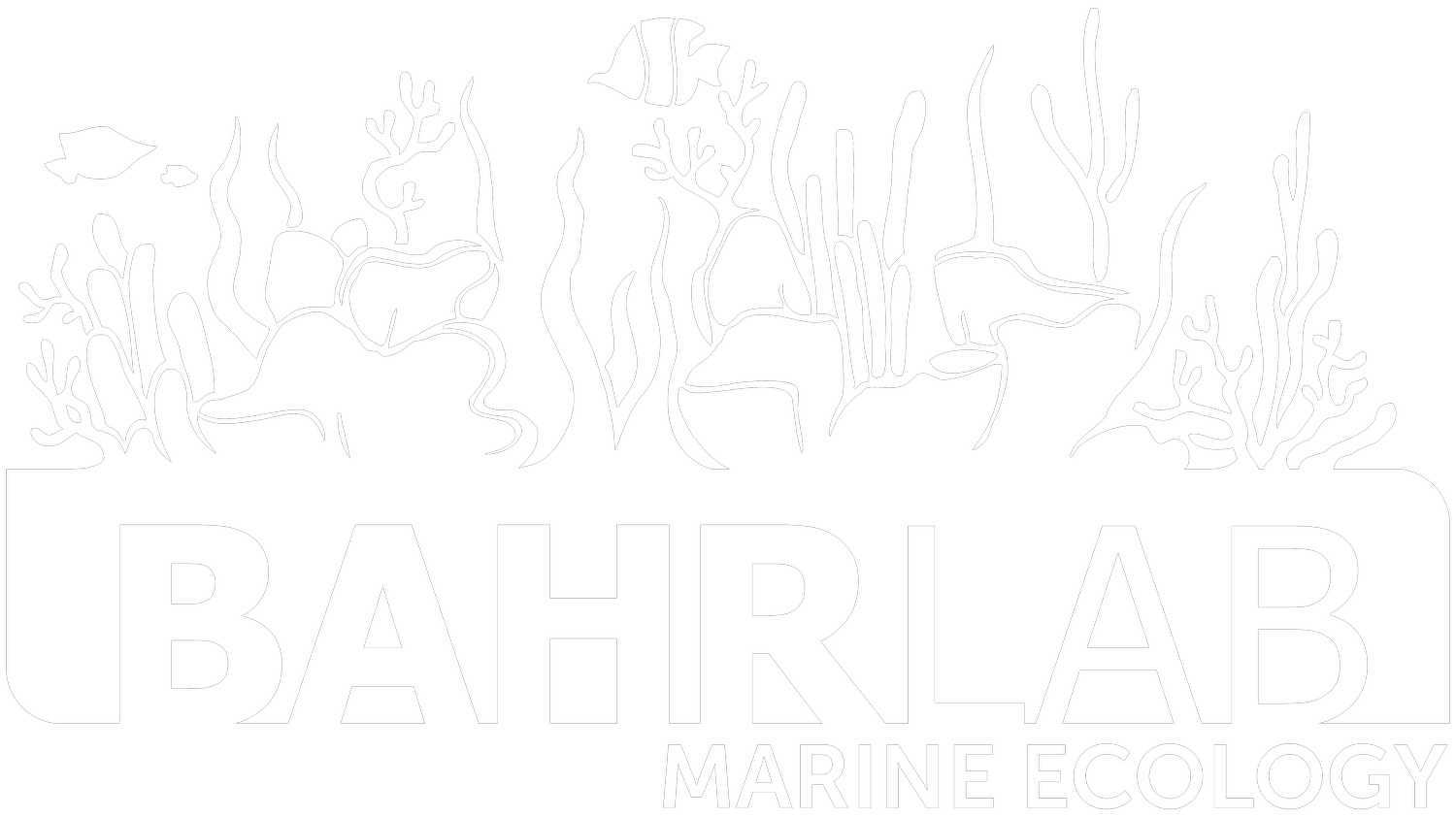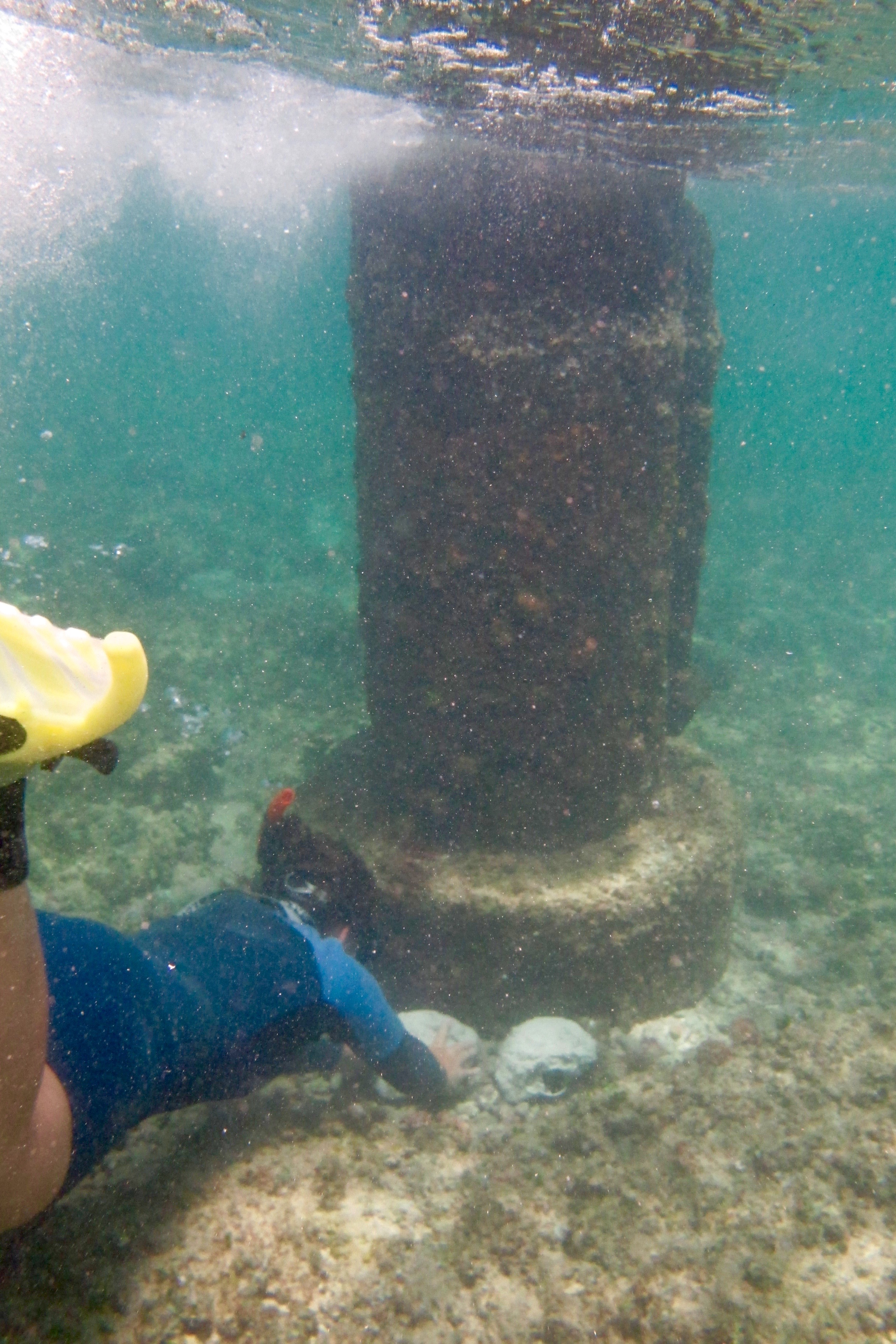CURRENT PROJECTS
DECORATE
Funding: NOAA RESTORE
Status: 2023- current
Collaborators: UT Austin Marine Science Institute (UTMSI), TAMU-CC, Texas Parks & Wildlife, The Nature Conservancy, Coastal Conservation Agency, Mission-Aransas National Estuarine Research Reserve, City of Port Aransas
Oyster reef systems play an important role in marine ecology by providing a habitat for other marine organisms, purifying and stabilizing coastline waters, and fixing carbon. However, due to harvesting pressure, disease outbreaks, climate change and pollution, oyster populations have drastically decreased creating the need for stringent and precise management practices. This project is designed to study the effect of preservation and restoration techniques on the health and productivity of 50 oyster reefs spread out across southern Texas bay systems for a three-year period. Our lab will measure the growth of the oyster reefs through calcification measurements.
For more information or resulting datasets of the DECORATE project, please click the link below.
Cryptic Corals in the Coastal Bend
Status: 2020 - ongoing
Collaborators: Texas A&M University-Corpus Christi, Boston University
We are investigating how corals survive in the dynamic environmental conditions of the Packery Channel Jetties located in Corpus Christi, Texas. M.Sc. student, Ashleigh Epps, is focusing on the feeding mechanisms these corals use to endure these challenging conditions.
Mauka-Makai:
Ridge to Reef Connections
Status: 2017 - ongoing
Collaborators: Texas A&M University-Corpus Christi, Coral Reef Assessment and Monitoring Program, Division of Aquatic Resources, The Nature Conversancy, Heʻeia National Estuarine Research Reserve
We are currently working with the Coral Reef Assessment and Monitoring Program, Division of Aquatic Resources, The Nature Conversancy, and the community groups at Heʻeia to understand how restoring the watershed may influence the adjacent coral reef environment.
Monitoring Coral Reef Ecosystems
Status: 2012 - ongoing
Collaborators: Texas A&M University-Corpus Christi, Coral Reef Assessment and Monitoring Program, Hawaiʻi Institute of Marine Biology
The Hawai‘i Coral Reef Assessment and Monitoring Program (CRAMP) was created during 1997-98 by leading coral reef researchers, managers and educators in Hawai‘i . The initial task was to develop a state-wide network consisting of over 30 long-term coral reef monitoring sites and associated data base. CRAMP is a research program designed to identify the controlling factors, both natural and anthropogenic, contributing to the stability, decline, or recovery of Hawaiian reefs. CRAMP has developed a standard coral reef assessment and monitoring methodology in achieving its goals. CRAMP is an integrated state-wide program with a common data base and rapid information dissemination system that provides the means for managers and researchers to detect and respond appropriately to environmental threats on Hawaiian reefs.
We are currently working with Dr. Kuʻulei Rodgers at CRAMP sites throughout the Hawaiian Islands to gain a better understanding of ridge to reef connections and how humans will shape future reefs.
PREVIOUS PROJECTS
The 'un'natural history of Kāneʻohe Bay, Hawaiʻi
Kāne‘ohe Bay, which is located on the on the northeast coast of O‘ahu, Hawai‘i, represents one of the most intensively studied estuarine coral reef ecosystems in the world with over 1600 publications. This coral reef ecosystem has been impacted by humans for more than 800 years but despite several major disturbances, these reefs have developed and continue to persist under rather severe natural and anthropogenic perturbations (see The unnatural history of Kāne‘ohe Bay: coral reef resilience in the face of centuries of anthropogenic impacts). This review paper highlights the anthropogenic and natural disturbances that have occurred in Kāneʻohe Bay from the Polynesian Era (1250-1778) to the Western Era (1778-2015) into the Future Era (2015-2040).
To date, these reefs have proved to be very resilient; however, we are currently examining the limits of Kāneʻohe Bay reef resilience in the face of global climate change.
















